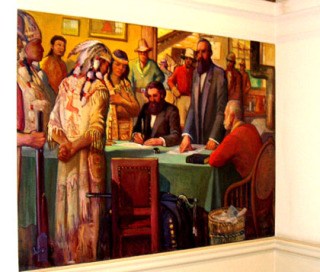VICTORIA – The B.C. School Trustees’ Association is calling for a mandatory high school course on the history of residential schools set up to assimilate aboriginal children into European culture.
Trustees propose a 25-hour course required for all graduating students, using interviews with residential school survivors, presentations by aboriginal leaders and discussion of current events.
This would build on aboriginal courses already in offered in B.C. schools, and a public education effort that began with Prime Minister Stephen Harper’s 2008 apology and compensation for Canada’s residential school policy.
B.C. Teachers’ Federation vice-president Glen Hansman gave a speech on the need for mandatory education to a 2012 teacher conference. He said current aboriginal culture courses are poorly attended, and went on to denounce a school system he said is still based on “colonialism” and a “settler construct” of history.
“We need to acknowledge that racism is the norm in public schools – still today,” Hansman said.
Is it really? He also claimed that the purpose and legacy of the residential schools have been “deliberately hidden” from school curriculum.
Rather than provide current evidence, Hansman recounted an old anecdote about American-style stereotyping in the form of a tomahawk-waving sports mascot, from his own high school days in Ontario in the 1990s.
But mostly he demanded social engineering in schools that must of course include more funding, more teacher professional development time and an affirmative action program to recruit more aboriginal teachers.
Do Hansman’s allegations reflect the kind of attitude that would lead to truth and reconciliation? Or are they signs of another unfortunate legacy, that of the victim studies mentality that permeates our universities?
Here’s a suggestion for this mandatory course. Students could spend a couple of hours on one of the definitive works of B.C. aboriginal history, A Stó:lo Coast Salish Historical Atlas. A long-term project of the Stól:lo Nation, the atlas has meticulously documented chapters on European contact and residential schools, and others that piece together oral histories and what few written records there are of B.C. First Nations life at the time of European contact.
A journal kept at Fort Langley from 1827 to 1830 documents some of the raids between aboriginal communities on the Fraser River and Vancouver Island, corroborating elders’ accounts. During those three years, Cowichan men attacked the Chilliwack Stó:lo community four times. In the same period, the journal records 30 incidents of inter-community violence, some reaching down to present-day Washington state.
Atlas editor Keith Thor Carlson summarized the research this way: “Viewed from the perspective of the aggressor, raids and attacks appear to have been motivated primarily by a desire to obtain quick wealth (in the form of slaves and property such as dried and smoked salmon) or to exact revenge for previous insults.”
Archaeological study of stone fortifications and weapons at fishing sites in the Fraser Canyon traces a history of inter-community violence back at least 3,000 years.
Historians characterize some of this as warfare. British colonial authorities developed a “settler construct” about these activities: they saw them as assault, robbery, abduction and murder as well as slavery.
This is the seldom-discussed backdrop for the European settlement of British Columbia, the imposition of British law and the later establishment of church-run residential schools.
None of this is to excuse the forced removal of aboriginal children from their families, the horrendous abuse and neglect or the multi-generational damage to a culture already weakened by waves of smallpox. This 1928 plan to fix what was called the “Indian problem” deserves to be understood by everyone.
But glossing over historical context and presenting a guilt trip to students would serve no one well.
Tom Fletcher is legislature reporter and columnist for Black Press. Twitter: @TomFletcherBC
